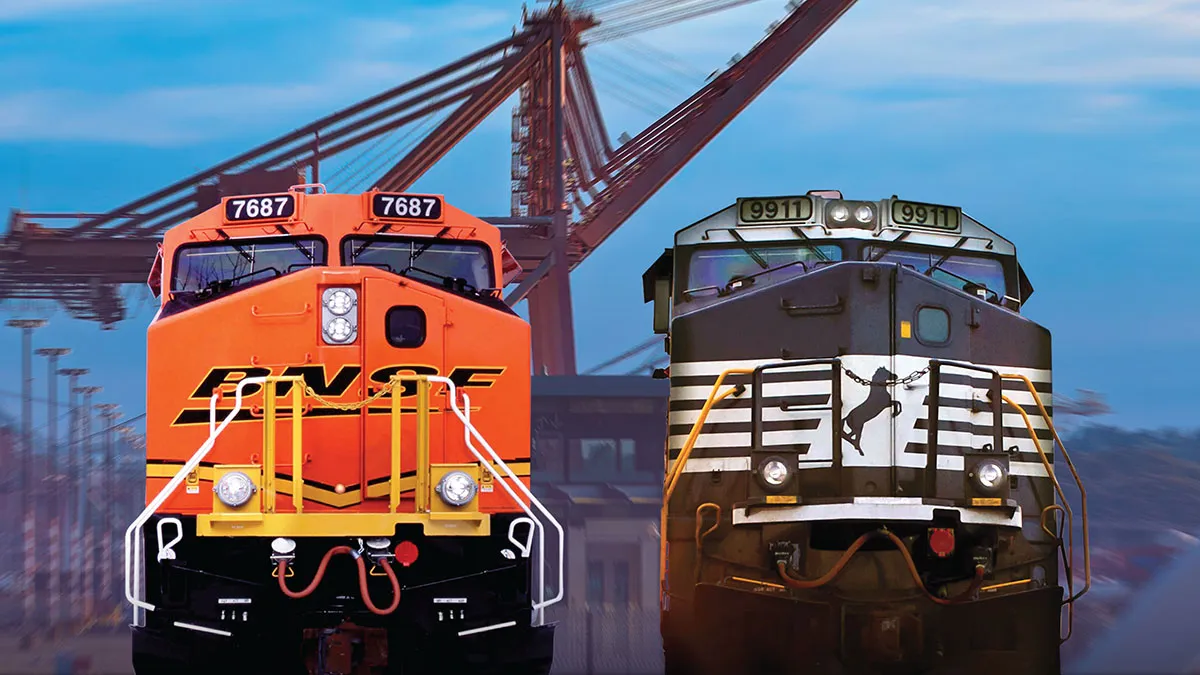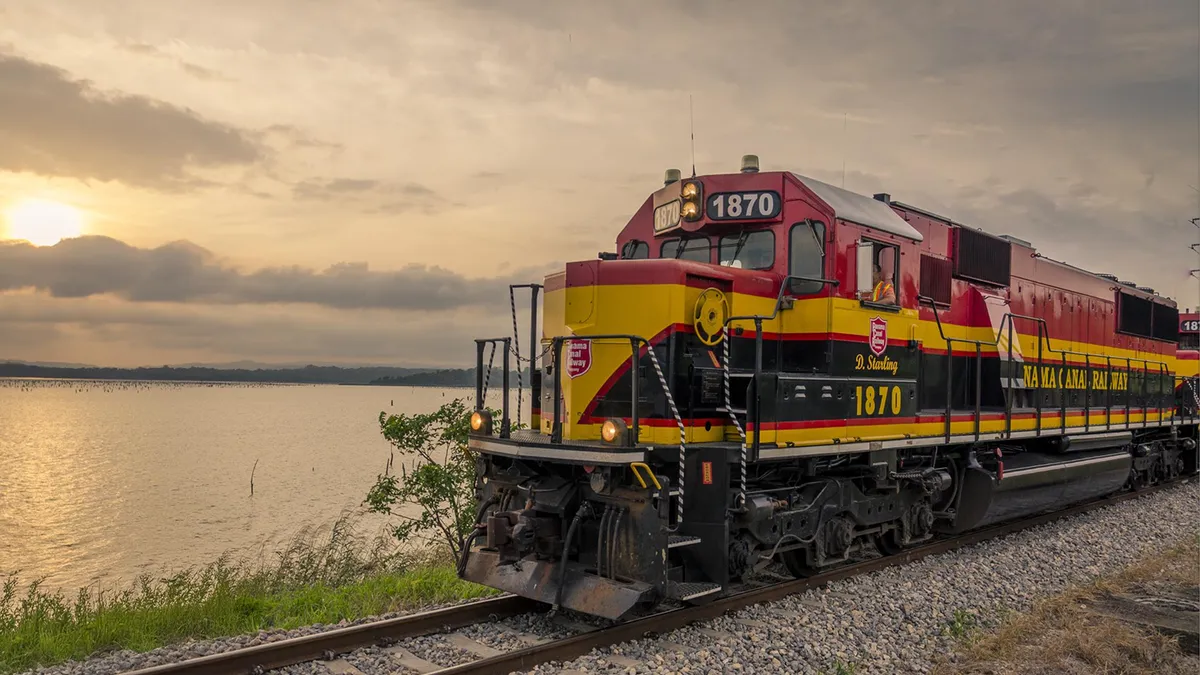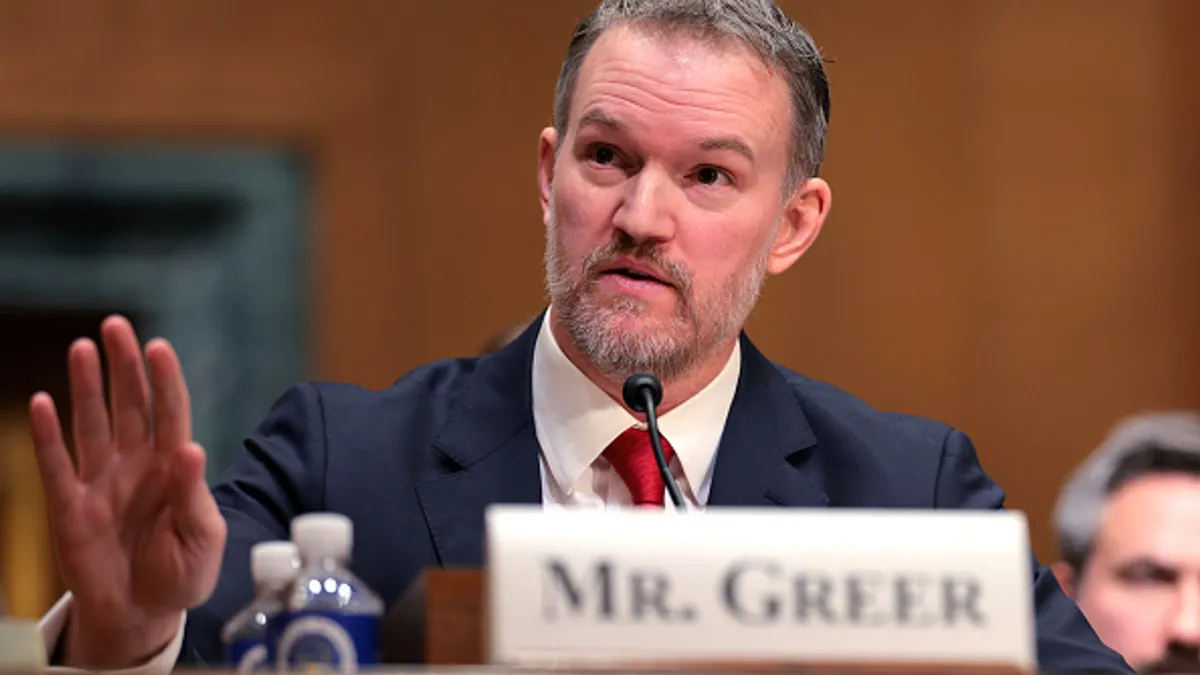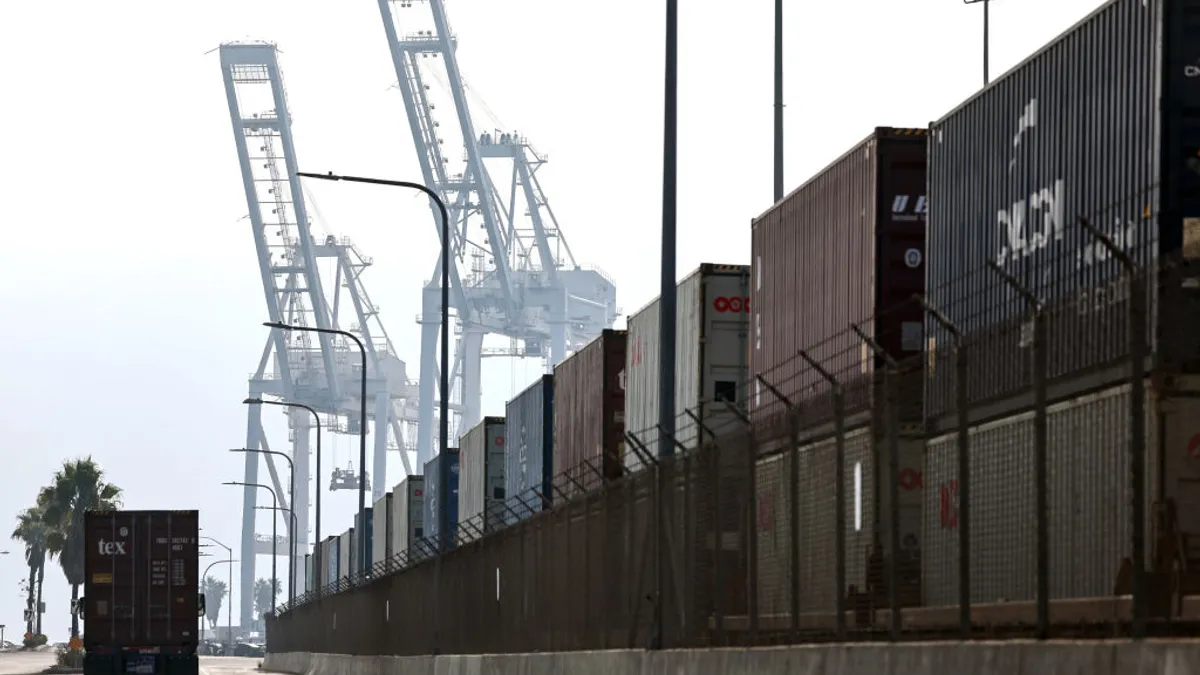Railroad executives used words such as "surreal," "unprecedented" and "roller coaster" to describe 2020 on Q3 earnings calls.
In April, U.S. carload totals were the lowest they had been since the Association of American Railroads started tracking in 1989. Intermodal volume came roaring back in Q3, just a few months after most Class I railroads had furloughed hundreds of workers and stored locomotives to reduce costs.
By September, carloads were still down YoY, but intermodal container volume was up 7% industry-wide, and all of the publicly traded U.S. Class I railroads posted intermodal volume gains. But, instead of bringing back the resources they had taken off line, the railroads had other ideas.
Most of the Class I railroads have adopted the principles of precision scheduled railroading. So, when volumes came flooding back, they made trains longer and heavier — a hallmark of PSR.

CSX grew train lengths 13% YoY in Q3. "We are able to do that with 350 less locomotives. So there's a lot of assets that we were able to pull out as we were making these changes," said CSX Executive Vice President of Operations Jamie Boychuk on the railroad's Q3 earnings call.
Kansas City Southern grew train lengths 16% YoY in the quarter. Union Pacific, too, leaned on longer trains to absorb a 5% bump in intermodal volume. Norfolk Southern, earlier in its PSR journey than most, is also focused on building longer trains, with CEO Jim Squires calling Q3 a record for the measure last week.
Several Class I rail executives said they are attempting to hold off on adding back staff and equipment until the last minute. And they expect pandemic-driven efficiency changes to stick.
"A lot of the productivity gains we've seen here due to COVID-19 are going to remain with us," KCS COO Jeffrey Songer said at the UBS Global Industrials and Transportation Conference in June.
Keeping train starts and equipment online low means cost will almost certainly stay low, too. Depending on the railroad, executives say that by lengthening trains (rather than increasing train and crew starts), they're either seizing an opportunity to streamline operations, or they're being cautious about the staying power of the volume recovery.
But based on Q3 results, that's not necessarily a recipe for good service.
Trip plan compliance is one of the few key performance indicators commonly tracked in PSR that reflects the shipper experience. And when volume returned, this service metric suffered.

CSX executives reported that, though the aggregate quarterly TPC figure fell from Q2 to Q3, the measure was close to its Q2 level by the end of the quarter. Boychuk atrributed the dip to the fast return of volume and hesitance to lose the efficiency gains enabled by the volume dip.
"We wanted to make sure that everything we gained with respect to our train footage and train tonnage, road starts, that we didn't lose any momentum on that side," said Boychuk.
KCS executives acknowledged last week that their current TPC may hinder their ability to convert freight from the highways to the rails, even in a tight trucking market.
"We understand where the connections can have issues and we are working on that," KCS Executive Vice President for PSR Sameh Fahmy said of the company's efforts to improve trip plan compliance. He later added, " So, 60% is not great, but it is quite decent considering what we have been through during this quarter. And now with our eyes also very focused on it ... these numbers will improve."
CSX CEO Jim Foote said railroads are handling the balancing act the best they can — or at least better than they might have in the past.
"Listen, I have been doing this a long time. If you would [have] had this kind of traffic surge across the rail network in North America four, five years ago, we would be now talking about gridlock across all the major cities in the country and we wouldn't be doing anything," he said.
But not all stakeholders are buying the argument that railroads are offering the best service they can given the volatility. In late August, the Surface Transportation Board and the Federal Railroad Administration issued joint letters to the seven Class I railroads regarding late trains.
"It is our expectation that there will be heightened emphasis on improving employee availability, equipment resources, and robust communication to quickly resolve service issues as they arise and to prevent them from becoming widespread," read the letter.
The railroads responded in their own letters, outlining efforts to maintain service levels. Norfolk Southern wrote on Aug. 31, 550 furloughed crew members has returned to work since June. CSX wrote that 80% of furloughed crews had returned as of Sept. 1.
The arc of the recovery may decide when railroads get to the point where railroads are forced to build up again.
Norfolk Southern, KCS and CSX offered no guidance for the rest of 2020. Union Pacific expects volume to be up in the low single digits in Q4 and down roughly 7% YoY for the full year. The railroads' hesitancy to rebuild capacity amid a still uncertain pandemic make these dynamics a potential concern for shippers.






















